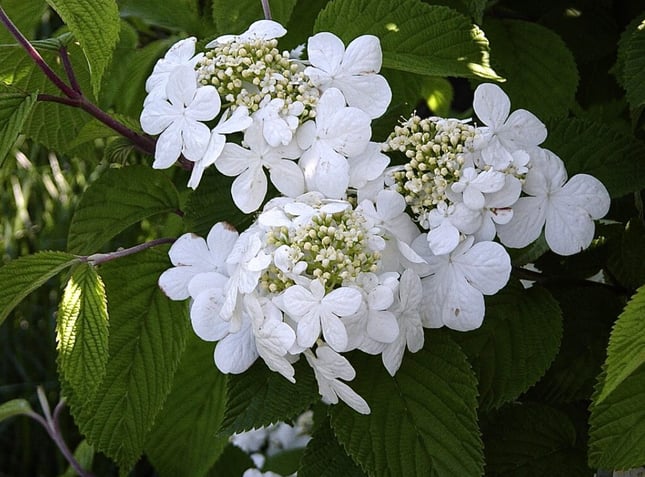Cultivar Substitutions for the Three Most In Demand Landscaping Plants
Do I love to change my plans in the middle of a project? No, I do not.
Yet I know in this business it happens a lot on almost every project. Landscape architects will specify plant sizes and cultivars, but availability and budget don’t always sync with the planting plan. The good news is that, often, cultivar substitutions can be made that will barely be noticed in the final landscape. When you’re faced with plant shortages or limited availability, you’ll want to have an understanding of how to use size and cultivar substitutions when you are working on a project where every dollar is already accounted for.
What to Do When the Three Most Popular Plants Sell Out
It is a vicious cycle. The planting plan specifies a cultivar with the size, color and features that are perfect for that location in that landscape. The cultivars included in the plan are usually the popular ones, which means they quickly sell out each season. And if your project timeline is delayed, then what? Here are some candidates for cultivar substitution you can consider when these popular plants are out of stock.
Viburnum
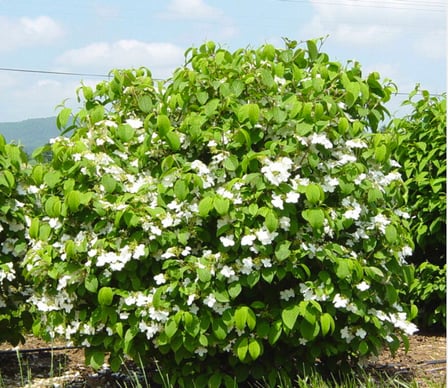 Recently a customer had plans calling for Viburnum Shasta in a four-foot plant. At the time, we were carrying a three-foot Shasta and some five-footers as well. The budget would definitely not sustain the five-foot option. They needed to buy what the budget would allow. One solution would have been to choose the three-foot Shasta and fill them in to fit the space the four-foot Shastas were going to take. But I offered another option, Viburnum Mariesii in four-foot, which is almost the same plant - same size, same flower type - they are very similar. The bloom time is one week different between the Mariesii and the Shasta, and Mariessi has a little bit more of a layering effect. But the differences are incredibly subtle. Mariessi is a great substitution when a Viburnum Shasta is not available in the specified size or is sold out.
Recently a customer had plans calling for Viburnum Shasta in a four-foot plant. At the time, we were carrying a three-foot Shasta and some five-footers as well. The budget would definitely not sustain the five-foot option. They needed to buy what the budget would allow. One solution would have been to choose the three-foot Shasta and fill them in to fit the space the four-foot Shastas were going to take. But I offered another option, Viburnum Mariesii in four-foot, which is almost the same plant - same size, same flower type - they are very similar. The bloom time is one week different between the Mariesii and the Shasta, and Mariessi has a little bit more of a layering effect. But the differences are incredibly subtle. Mariessi is a great substitution when a Viburnum Shasta is not available in the specified size or is sold out.
Taxus
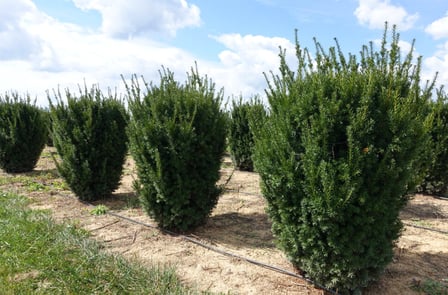 Cultivar Hicksii is very popular when plans call for a Yew. Sure enough, we had a major client asking for Hicksii for a big project. What we had on hand was the Hatfield cultivar. Again, this is not the end of the world at all. Hicksii was probably specified by the architect, but Hatfield is so similar, there would be very little noticeable difference in the end result. The Hicksii is a bit faster growing, and the color is slightly different between the two, but switching to Hatfield saved the day in this case.
Cultivar Hicksii is very popular when plans call for a Yew. Sure enough, we had a major client asking for Hicksii for a big project. What we had on hand was the Hatfield cultivar. Again, this is not the end of the world at all. Hicksii was probably specified by the architect, but Hatfield is so similar, there would be very little noticeable difference in the end result. The Hicksii is a bit faster growing, and the color is slightly different between the two, but switching to Hatfield saved the day in this case.
Buxus
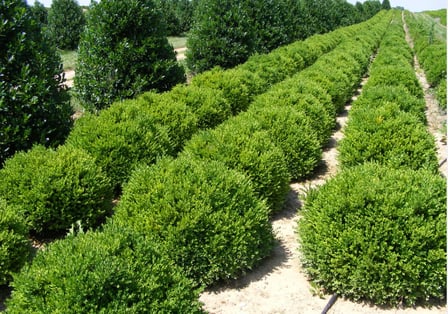 Boxwood is always in high demand. One project I recall had specs calling for 30” spread Green Velvet. We didn’t have the Green Velvet in the 30” spread, but we had it in Chicagoland Green and Green Mound. From 50 feet away all three look the same. For the average person looking, they would need a DNA test on the plant to figure out which was which. The main differentiator that we can see is in the growth rate of one plant to another. Plant confusion among boxwood cultivars is nothing new. So if plans call for one of these, cultivar substitution should not be a problem.
Boxwood is always in high demand. One project I recall had specs calling for 30” spread Green Velvet. We didn’t have the Green Velvet in the 30” spread, but we had it in Chicagoland Green and Green Mound. From 50 feet away all three look the same. For the average person looking, they would need a DNA test on the plant to figure out which was which. The main differentiator that we can see is in the growth rate of one plant to another. Plant confusion among boxwood cultivars is nothing new. So if plans call for one of these, cultivar substitution should not be a problem.
Growth Rates and Other Differentiators Among Cultivars
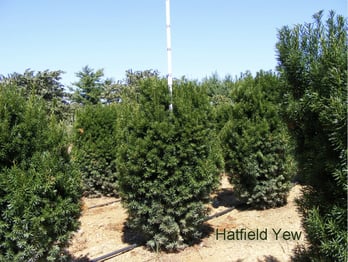 Whichever cultivar you are trying to substitute, questions about growth rate and other differences are important to have a handle on. There is a go-to resource I use to predict variables like inches of growth per year. Michael Dirr of the University of Georgia has written, among many helpful resources, the Manual of Woody Landscape Plants. This excellent book gives meticulous descriptions that will help you understand specifics on growing zone compatibility, and descriptions of the unique characteristics of each plant. I would highly recommend getting yourself a copy. And I can’t mention Dirr without mentioning a book that I have literally worn out the binding on, The Reference Manual of Woody Plant Propagation. This is my bible out in the field.
Whichever cultivar you are trying to substitute, questions about growth rate and other differences are important to have a handle on. There is a go-to resource I use to predict variables like inches of growth per year. Michael Dirr of the University of Georgia has written, among many helpful resources, the Manual of Woody Landscape Plants. This excellent book gives meticulous descriptions that will help you understand specifics on growing zone compatibility, and descriptions of the unique characteristics of each plant. I would highly recommend getting yourself a copy. And I can’t mention Dirr without mentioning a book that I have literally worn out the binding on, The Reference Manual of Woody Plant Propagation. This is my bible out in the field.
There are always variables when fulfilling the landscape designer’s vision. You can’t always account for the microclimates or soil health on a project site. Plants are going to respond how they do. But when you understand the overall characteristics and properties of different cultivars, you can make smart cultivar substitutions.
Stay Flexible and Broaden Your Range of Possibilities
Flexibility is the key when you are trying to find the right plants on a fixed budget. When the plant you want is out of stock, it throws a wrench into your process. That is never fun. Yet, most of the time, a perfectly acceptable solution is right in front of you. It might not be the exact size or cultivar specified in the design, but with some small adjustments – and honestly with some cultivar substitutions there is little to no discernible difference – you will have a finished landscape that looks the way you envisioned and thrills your client.
Reserving the plants you need for when you need them can be a real challenge. Download our ebook Solving Plant Shortages in a High Demand Landscaping Market to learn about practical solutions to common plant sourcing problems and take the stress out of those last minute changes when they happen.




